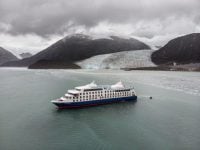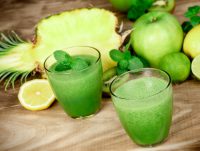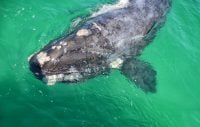Chile is considered one of the most popular travel destinations in the last five to ten years and even made it into Lonely Planet’s top 10 destinations. If you are wondering why, it is due to its great diversity of landscapes, climates, and destinations across the country. But when is the best time to visit Chile? In this article, you can find out when is the best time to go to Chile and how you can enjoy your stay there.
A Country of Wonders: Chile
Chile is a unique destination with a vast range of landscapes and habitats. The country has something for every traveller’s tastes at any time of year. There is so much to see and do, especially for nature lovers, that Chile has become one of the most popular recent travel destinations and even made it into Lonely Planet’s top 10 destinations to visit..
There are huge variations between the different climate zones so it’s essential to consider the climate when planning a trip. There are four macro-bioclimates: tropical, Mediterranean, temperate, and antiborealis. These climate zones range from hot, arid desert landscapes, to temperate zones to cold steppes, and frigid tundras.
Chile is isolated from its neighbours by imposing geographic features. In the north it borders the Atacama Desert, the driest desert in the world. On the east it is bordered by the formidable Andes mountain range, in the south by the ice fields of Patagonia and Antarctica, and in the west by the Pacific Ocean.
Its geographic peculiarity, and climactic extremes mean Chile is one of the few countries in the world where you can experience sweltering heat and freezing cold within two days.
Climate zones and weather in Chile
Chile is located in the southern hemisphere so its seasons are the opposite of those of North America and Europe. The summer months are January and February, while July and August are the coldest time of year, and spring starts in September. It is warmest in the north of Chile, and the further south you go, the closer to Antarctica and the south pole and the colder it gets.
The best time to visit Chile
The best time to visit Chile depends on where you want to go and what activities interest you. It is essential to plan ahead with the weather in mind because parts of the country can become inaccessible during the winter.
National parks and hiking
Spring
September to November
September, October and November are quiet months for travel in Chile compared with the peak summer season ahead. The weather is temperate with mostly sunny days, only occasionally overcast, and 12–16 hours a day of sunlight. Spring is the ideal time for a peaceful visit with fewer crowds in the main tourist destinations. Prices drop and facilities are less overwhelmed.
Spring is one of the best times to visit Patagonia in the south of Chile for hiking and photography to witness the landscape transition from bleak wintry snow-scapes to a colourful spring explosion.
Summer
December to February
The high season for the national parks and hiking in Chile is the southern hemisphere summer. Patagonia in the south of the country does not get too hot, but crucially, the hiking trails are ice-free. Hiking in Chile is comfortable and pleasant with daytime temperatures reaching up to 20 degrees Celsius and night temperatures rarely falling below freezing.
Aside from hiking, the summer is the best time to visit for incredible options for incredible Kayaking in the Chilean Lake District, and rafting, fly fishing and horse-riding. Cruise ship tours around southern Patagonia and to Antarctica offer routes that are not available at other times of the year, travelling to stunning locations that cannot be accessed in the colder months. Make sure to book well ahead for the limited accommodation options that fill up quickly in the summer.
Fall
March to May
It is a good time to visit in March, April and May, after the high season crowds have dispersed. Prices fall as do visitor numbers, but the region still experiences good weather for outdoor activities, with highs reaching 50°F (10°C) and sunny, clear skies. The conditions are ripe for photographers with the golden autumn tones of the countryside. Hiking, fly fishing, horse riding, kayaking, rafting and camping activities also continue for a time after summer, weather permitting, particularly at the beginning of the season before the colder climate sets in.
Winter
June to August
Fans of Wintersports visit in July and August for the skiing in Chile. This is high season in the ski resorts, but these slopes do not draw the same numbers as northern hemisphere ski fields so it can be a great option for reduced queues. Some foreign national teams travel here to take advantage of the extra training time.
If you are planning a vacation in the area, download our free practical guide to Patagonia.
When to visit the Atacama Desert
One of the top destinations in Chile is the Atacama Desert. Explore the valleys and gorges and amazing salt flats of this desert which is accessible all year round. It has a typical desert climate, cold at night, and sweltering during the day, with extreme temperature differences.
In spring and summer (October to March), the nights are less frigid and the daytime temperatures are hotter than in autumn and winter, or between April and September. Rainfall is rare in the Atacama Desert, though some rain is most likely to fall between January and April. This meteorological phenomenon is called a Bolivian winter. In the winter in the Atacama Desert, there is no rain at all, so it is a wonderful time for stargazing as the sky is crystal clear.
Consider the best season for your holiday
Unlike further north in South America, Patagonia has clearly defined seasons. The weather is generally better between December and February, but can still be fairly unpredictable, so it helps to have an idea of what expect, particularly in places like Torres del Paine National Park where the weather can change from one minute to the next.
Check out our guide to Patagonian weather and the best time to visit to be prepared.
The season in which you travel can also affect wildlife watching on your trip – so read up on the best times for viewing animals in Patagonia. But here is an overview of when to visit some of the most well-known wildlife of the southern cone.
When to see Patagonian Marine Wildlife
Both the Atlantic coast in the east of Argentine Patagonia and the Pacific Ocean, which flows into the fjords in the west of Chile, are thriving hubs of marine wildlife. To see many of these animals, the summer and fall seasons are best for visiting the colonies or taking a tour out onto the water.
Gentoo Penguin
- Visible: September to April
- Best locations to see them: Tierra del Fuego.
Magellanic Penguin
- Visible: September to May
- Best locations to see them: Chilean fjords, Chiloé Island, Peninsula Valdés, Magdalena Island and Tierra del Fuego.
King Penguin
- Visible: All year round
- Best locations to see them: Tierra del Fuego.
Humpback Whale
- Visible: December to May
- Best locations to see them: Chilean fjords.
Blue Whale
- Visible: December to May
- Best locations to see them: Chiloé Island.
Orca
- Visible: December, March and April
- Best locations to see them: Chilean Fjords (December) and Peninsula Valdés (March and April).
Southern Right Whale
- Visible: June to September
- Best locations to see them: Arica to Cape Horn (sightings of this whale are rarer –their numbers are depleted from previous whale hunting
When to visit Patagonian Wildlife On Land
- The wild camelid cousin of the llama – the guanaco – can be spotted any time of the year, grazing in the Patagonian grasslands or mountains.
- The elusive puma can be sighted in Tierra del Fuego and the Aisén Regions of Chile, particularly in Torres del Paine National Park.
- Andean condors soar through the skies in Torres del Paine and whole groups can be spied feasting upon guanacos.
See our free ebook on the best global destinations for wildlife spotters
No comments yet
There are no comments on this post yet.






Leave a comment